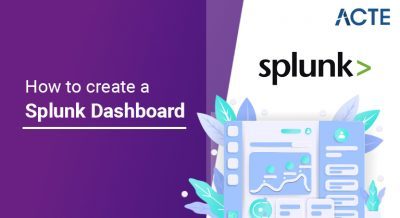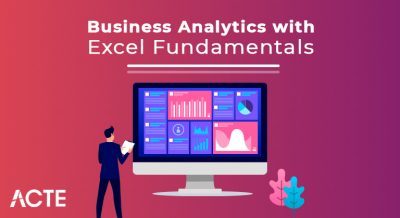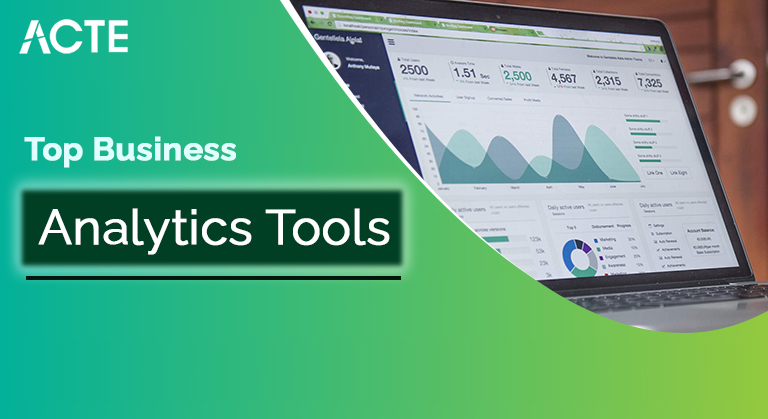
In a nutshell, business analytics tools is a complicated blend of traditions, methods, applications, skills, and technologies that are desired at performance and it is also helpful for examining business performance so that they can execute more satisfactory derivatives and strategic objectives.
- Introduction of Business Analytics Tools
- Tools for Business Analytics Tools
- Features of Business Analytics Tools
- Types of Business Analytics Tools
- How does this work?
- Why do you want to be a Business Analytics Tools?
- Higher salaries and benefits
- Trends for Business Analytics Tools
- Benefits of Business Analytics Tools
- Conclusion
Introduction Business Analytics Tools:
Business statistics: A data management solution and a small set of business intelligence, which use methods such as data mining, forecasting analysis, and statistical analysis to analyze and convert data into useful information, identifying and predicting trends and results, and finally, done. Data-driven smart business decisions.
The following are the main components of a standard business statistics dashboard:
Data aggregation: prior to analysis, filtered, data must first be collected, , and filtered, either by voluntary data or transaction records.
Data Mining: Filters are large sets of data that use information data, statistics, and machine learning to identify styles and establish relationships.
Sequence and Integration Identification: Unpredictable actions performed in conjunction with other actions or sequences are identified.
Text Mining: is the process of scanning and organizing large, informal text data sets to analyze quality and value.
Forecast:Forecasting is the process of analyzing historical data over some time to make informed, predictable estimates about future events or behaviors.
Predicting: Business forecasting statistics employ a variety of mathematical strategies to generate unpredictable models, extract information from data sets, identify patterns, and predict scores for a variety of organizational outcomes.
Improvements: Once trends have been identified and predictions have been made, businesses can assess trends using simulation strategies.
Data Visibility: Provides visual presentations such as charts and graphs to facilitate and speed up data analysis.
Tools for Business Analytics:
Flexible Profile:Some BAs work on the technical side of projects, while others focus on the business side. Some of them work to improve workflow, define and streamline processes, and solve technical problems. There are numerous opportunities for a person to develop and support themselves, particularly if they intend to start their own business in the future.
No boring days:According to a Korn Ferry Institute study, the main reason for changing jobs is the employee’s poor profile. According to research, 33% of people change jobs because they are bored with their current job and want a new challenge. Nonetheless, many businesses
Big Demand: Business Analysis is a relatively new field, and as companies around the world recognize your potential, new opportunities are becoming increasingly available. This profile is expected to grow by 19% over the next ten years in such a competitive job market. Given the profile’s prospects, there will be no better time to visit it. Examine your options for a career in business analysis.
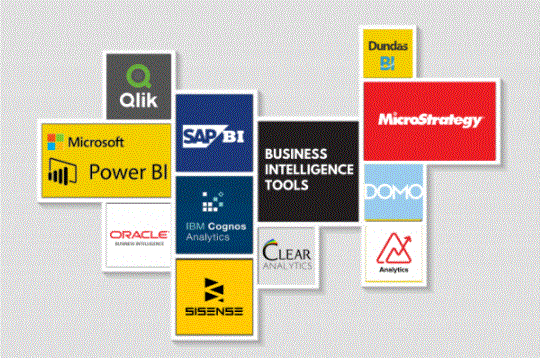
Higher salaries and benefits:
Furthermore, the top 10% earn more than Rs. 15 lakh per year. Furthermore, BAs are well compensated for their efforts. Wages should also continue to rise in response to rising demand.
Automated operation: As a business analyst, you must collaborate with several departments and interact with various levels of management. This gives the operating system a lot of flexibility and allows them to perform their tasks independently. This autonomy allows BAs to experiment with new approaches to meeting customer expectations.
Applying life lessons and past knowledge:Many activities in the modern machine age necessitate little application of preconceived notions or life learning. However, to learn and meet the needs of life, successful business analysts must have a wealth of knowledge and real-world experience. Each new project necessitates a unique set of skills and project flow to solve the problem at hand. Again, this can only be accomplished by focusing on real-world solutions.
Grow individually and as a team: Although the job offers a lot of freedom and independence, business analysts work on projects that involve a variety of departments. As a business analyst, you not only solve problems, but you also work toward the same goal of enriching yourself and your team.
SAS Business Analytics (SAS BA)
SAS-based business analytics capabilities for business-based statistical software enable users to analyze and convert unstructured text data into relevant information that analysts can search for. SAS BA is fully integrated with a variety of mathematical tools, making it easier to analyze large data sets in real-time. The Business Entrepreneurship Forum also forecasts future trends based on big data information.
QlikView
QlikView is the preferred tool for business analysis due to its unique features, such as patented technology and memory processing, which allows for the delivery of timely business statistics reports. QlikView, one of the best business analysis tools, allows users to visualize data relationships using specifically related and unrelated data colors that are automatically stored and compressed at 10% of their native size.
Board
Because of the industry-leading business statistics model, which allows users to create interactive business statistics reports with dashboards, the board includes a list of high-level business analyst software tools. The business scale platform includes the most advanced business analysis tools, such as dynamic statistics. A business statistics board tool can handle large amounts of data while also allowing for accurate situation analysis.
Slunk
Splunk is one of the most popular business analysis tools in small and medium-sized businesses. Splunk was originally designed to process machine log file data, but it has since grown to include a plethora of complex features, such as an easy-to-use web interface and a variety of viewing options. We’re not. Sisense, one of the most popular business analyst software tools, combines flexible and robust text analysis functions that allow users to transform unstructured text into valuable business intelligence.
Features of Business Statistics:
6 Features an analysis tool a business analyst must have:
Intuitive Interface:
It should enable the user to perform analytical tasks with an accurate visual interface without the need for codes or editing.
Ability to Collect Data:
Because business users access data from a variety of sources, the tool should support advanced data and enrichment.
Ready to Use Ideas:
In today’s fast-paced business environment, where delays of just a few seconds can drive away customers, the tool should be able to deliver ready-to-use business intelligence.
Easy to share:
To bring network information to a multi-user area, it should have a simple and manageable sharing power.
Quick stats:
It should expand to allow for customized analysis and the development of new modules for changing business needs.
Integration Support:
To enable seamless mobility and data compliance, it should support the integration of other major BIs, statistics, or data recognition tools.
Types of Business Statistics:
Business Analytics is divided into four categories, each of which is becoming more complex. They give us a way to approach the acquisition of real-time and future application data. Each of these types of business statistics is covered in detail below:
1. Descriptive Statistics
Summarizes existing organizational information to comprehend what has occurred in the past or what is occurring now. Because they combine data with mining methods, descriptive statistics are a simple form of mathematics. It improves data accessibility for corporate members such as investors, shareholders, sales managers, and sales managers. It can assist in identifying strengths and weaknesses as well as providing insight into customer behavior. This contributes to the development of strategies for targeted marketing.
2. Diagnostic statistics
This type of analysis aids in shifting the emphasis from past performance to current events and determining which factors influence trends. Techniques such as data acquisition, data mining, and downgrading were used to determine the cause of the events.
3. Predictive Analytics
This type of analysis employs mathematical models and machine learning methods to forecast future events. Using descriptive statistics, create models to identify the possibilities for objects. Machine learning experts are hired to perform predictable analyses. They can outperform traditional business intelligence in terms of accuracy. One of the most common uses of emotional analysis. Existing data from social media is collected and used to provide a complete picture of users’ perspectives. This information is analyzed to forecast their emotions (positive, neutral, or negative).
4. Written Analysis
Going beyond the predicted analysis, it makes recommendations for the next best step to take. It promotes all of the positive effects of a particular course and suggests specific actions that must be taken to achieve the desired result. It is heavily reliant on two factors: a strong response system and continuous analysis. Discover the link between actions and their consequences. The creation of recommendation programs is a common application of this type of statistics.
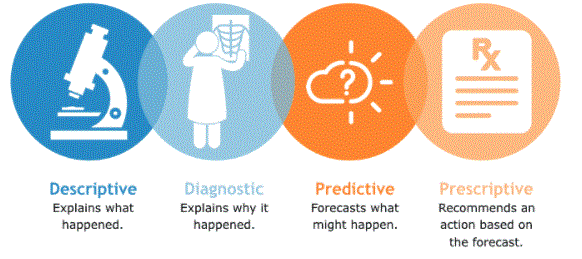
Examples of business statistics:
Growing sales:
In response to consistent sales, the online retailer implemented a sales dashboard in the hopes of stabilizing and growing its sales. The sales dashboard demonstrated that data was not driving sales. As a result, the trader redesigned his marketing strategy and transformed his targeted set-up system into data processing. As a result, sales have increased by 24%.
Develop marketing strategies.
A successful clothing retailer is noticing a decrease in customer purchases and sales. The retailer has decided to install a sales dashboard that will provide information about current and potential customers. With this new information, the seller has identified areas for improvement and highlighted areas where sales are strong. The seller will then be able to distinguish himself.
Using forecasting statistics.
The gym chain wanted to alleviate the drop in customer numbers. The company has implemented a predictive statistical model that identifies potential customers who are about to cancel their membership and then predicts incentives that can improve customer retention based on historical data. When at-risk customers arrive at the gym, the system notifies member staff so that incentives can be discussed and cancellations can be avoided.
Improving financial efficiency.
A bioscience company used business statistics to figure out why, after recent growth, it had lower percentages of collections, higher claims resistance, and a higher debt balance. The company used account-based metrics, a strategy that improves interaction with targeted accounts, with the help of software that allows for accurate online reporting, to identify the cause of excessive spending.
Increasing productivity through simple processes.
An online food ordering service was looking for new information to improve the product and streamline marketing operations. The company has used a dashboard to provide real-time access to its customers’ life cycles. This has resulted in data that has aided in the simplification of marketing activities and marketing campaigns, thereby achieving the goal of product development.
How Business Statistics Work:
Business statistics start with data collection:
However, no information is gathered. First, data collection parameters are established to ensure that data is collected and collected appropriately. These parameters ensure that specific data is collected to provide insight into a specific business need. The databases are then processed using mathematical software and tools. Reports are prepared with relevant data to make them more understandable.
Modern analytics tools and software are so advanced that they can perform all the steps from data collection to report processing. These reports are then used to monitor future forecasts, to create business data-based strategies and risk management and financial losses. Mathematics is one of the most accurate sciences in the world, and business statistics are a modern, technical mathematical formula.
Why is business analytics important?
- Business Statistics are used by organizations to make data-driven decisions. Business statistics provide businesses with a better idea and understanding of how to operate, and this information enables such businesses to perform efficiently and automate their processes.
- Not surprisingly, companies that run data and use business statistics frequently outperform people of their era. This is because the information obtained from business statistics allows them to understand why certain results are achieved, evaluate effective business processes, and even predict the feasibility of certain results.
- Business statistics also provide adequate support and coverage for companies that need to make the right decisions quickly.
- Another important aspect of business analysis is that it aids in the gathering of vital business information. It accomplishes this by displaying pertinent information.
- Efficiency is one of the components of a business analysis that can assist any organization in achieving faster results. Since their inception, business statistics have played an important role in assisting businesses in improving their efficiency.
- Business statistics collect large amounts of data over time in an easily analyzed format. This enables businesses to make more informed decisions more quickly.
- Organizations can reduce risks by using business statistics. It can help businesses avoid short-term and long-term risks by assisting them in making informed decisions based on available data such as customer preferences, trends, and so on.
Top Trends in Business analytics tools:
- Organizations rely on it to stay successful and competitive, but they have traditionally made important decisions by analyzing large amounts of historical data. Covid-19, on the other hand, has demonstrated that models that rely on historical data are out of date. Data that informs business decisions must be captured, analyzed, and understood in real-time so that organizations can respond to what is happening rather than making decisions based on previous events.
- As more organizations begin to adopt a new business analysis approach in search of real-time data that can be processed, it will be critical to understanding new emerging trends in business statistics. These are the top trends we can expect to see in the future.
- DataOps (data operations) is a short-term approach that enables organizations to track their data analytics activities more quickly. It responds to the growing demand from data professionals to extract important data from raw data, and it takes advantage of Facebook and Netflix’s popularity to gain an advantage over their competitors. The DataOps approach combines data professionals and well-known DevOps teams with their most efficient working processes. Through a collaborative and collaborative process, this combination improves and automates data editing.
- DataOps employs the continuous integration / delivery (CI / CD) methodology. This method employs automation to speed up longer processes, increasing productivity and delivering faster results at all stages of a data analysis project.
- While many organizations rely on automation to help them make sense of their data faster and more accurately, many are left wondering “now?” According to Gartner, by 2023, more than a third of analysts in large corporations will be performing DI.
- For DI driving, data professionals frequently examine predictable, descriptive, diagnostic, descriptive, and deciding data. They also rely on Artificial Intelligence (AI) and Machine Learning (ML) to accelerate the data analysis process that would otherwise be done by hand. Organizations can improve user experience, differentiate themselves from competitors, and increase revenue by using DI to improve business decision-making.
- Enabling technology to analyze data is typically handled within a central data center, which means that data collected by a business must be moved from where it is generated and disconnected from the network to the point where the required computing power to process the data is located.
- Edge computing is a new computer system that detects computer power on the outskirts of data centers, allowing data to be processed closer to the source. This reduces the amount of data that travels across the network, resulting in lower costs, fewer delays, and the ability to process data in real-time.
Data enables business.
DataOps
Intelligence in Decision Making
Data is processed at the edge.
Native Language Processing
Indigenous language processing (NLP) eliminates a common barrier in the field of mathematics. Different programming languages can be used by data professionals and other stakeholders who do not have the skills to work with data but need to extract business information from it. NLP can be used in business statistics tools to allow users of all levels of expertise to ask relevant data questions in their native language, and technology can respond. NLP, by integrating people, data tools, and analytics tools, enables participants with no technical knowledge – from the C-suite to vendors, customer service, and marketing teams – to gather and analyze data. They require it as soon as possible and as easily as possible.
Benefits/Importance of Business Analytics:
The importance of business statistics is widely recognized in the business world. There are numerous advantages to using business statistics. Here are a few advantages that will help you understand why business statistics will be an important part of the industry’s future.
Uses Big Data
Everything you do, including the comments you make on social media, has the potential to generate valuable data, which companies can use to better serve their customers.
Analyze Errors
Business statistics enable you to track and understand past mistakes, allowing you to correct or completely avoid them in the future.
Accurate Business Decisions
Any decision made based on solid data and information is always a good one.
An Overview of the Future
Business statistics process data efficiently, allowing you to accurately predict the future.
Easy to Use and Use
Business statistics are simple to understand and apply. As a result, you will not require the services of experts to conduct business analysis.
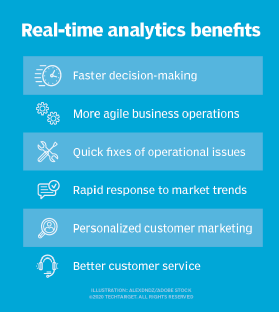
Conclusion:
Business statistics is an excellent field in which to work. It will have a positive impact on businesses. Many business statistics tools are still in use by some large corporations and are a part of our daily lives. There are numerous advantages to using business statistics. Business statistics are also more beneficial than business intelligence because they are better for predictive and conditional analysis.



